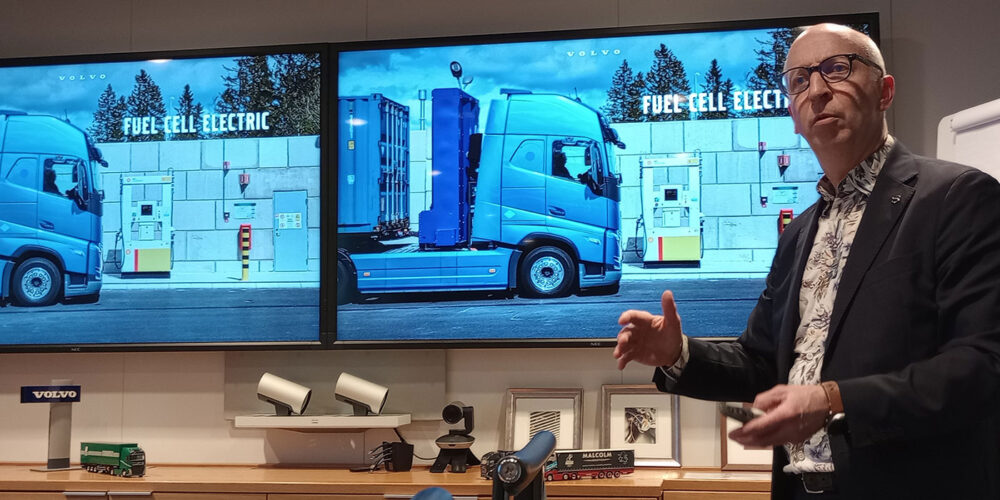For years, recommendations for truck tire maintenancecentered around inflation checks, visual checks for abnormalities, vehiclealignment, and industry standardized work procedures during mounting,dismounting, and other service operations. These core practices are necessaryfor safety, cost control and forminimizing downtime or unscheduled tire maintenance. There are many otherimportant truck tire issues that, for lack of a better distinction, might begrouped as tire care considerations. These are especially important in times offluctuating equipment use, thin margins and erratic trade cycles, since lack ofproper tire care can result in significant dollar loss.
Detailed tire inspection, proper cleaning and tire storageare among the most important considerations. Visual inspections, beyond thoseroutinely performed to assure compliance with highway enforcement guidelines,can pay big dividends. Subtle wear patterns, minor sidewall or tread crackingcan sometimes relate to a-non-optimum tire type for a particular servicecondition. Some fleets that once defined tire selection by simple steer, driveand trail tire choices now find costs creeping upward. Recently, I worked withone large truckload carrier that concluded after comprehensive tire inspectionsthat its business had evolved into three distinctively different tirerequirements. Changing from simple and proven tire selection to a more complex,but vocation-specific tire program lowered operating costs.
Tire cleaning is often more influenced by opinion than fact.Shined and glossy truck tires may look nice on a show vehicle, but do nothingto enhance performance or prolong tire life. Accumulated dirt alone does notharm tires, although it is very important that all solvent-containing materialsnot be allowed to build up on rubber surfaces. Tire manufacturers recommendperiodic cleaning with plain soap and water. Treads tend to be self-cleaningfrom road contact, and sidewall rubber compounds are designed withanti-oxidants and anti-ozonants embedded throughout. Normal flexing allowsthese protective chemicals to continuously migrate to the surface forprotection, minimizing cracking, crazing and other forms of weather checking.
To assure long casing life, exercise (flex) the tires bydriving the vehicle periodically. Vehicles parked due to freight downturns orexcess rolling stock inventory are especially vulnerable to sidewalldeterioration and should be driven every several months. This also changes thetire footprint to a different spot when the vehicle is parked again. Thesidewall just above the contact patch is most susceptible to cracking duringperiods of inactivity. If show-like appearance is desired, a surface blackeningtreatment like those applied by some quality retread operations is suggested.Never steam clean tires, since high pressures and temperatures can permanentlydamage radial truck tires, rendering them unserviceable.
Tire storage is another tricky issue. Tires should be storedto minimize interior moisture accumulation. Cool, dry, dark storage areas arepreferred. Unmounted tires should be protected from the weather, indoors andaway from open shop doors, to avoid exposure to direct sunlight, Keep them at adistance from all ozone sources, such as electric motors, welding equipment,fans and mercury vapor light fixtures. Solvents must not come in contact withstored tires. If tires are stacked horizontally in a column, it’s a good ideato place a pallet under the bottom tire and not stack more than six to eighttires.
Mounted tires should be kept inflated to recommendedpressures and be positioned to minimize exposure to direct sunlight andultraviolet rays. Ideally, position trucks/trailers, which are to be parked forlong periods East-West, so that the most direct sunlight does not contact thetire sidewalls. Never park vehicles close to generators, welding equipment, orother ozone sources. Concrete paving or clean dirt surfaces are preferred,since asphalt surfaces may contain petroleum components that will damage tiresover time. If asphalt surfaces are unavoidable, especially for long-termstorage, tire manufacturers recommend placing a barrier, such as plywood,plastic or cardboard between the tire and surface.
Proper tire care can helpconserve precious operating cost dollars. For more information, ask your tirespecialist and/or visit and the Rubber Manufacturers Association website at:www.rma.org.













